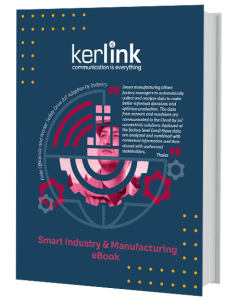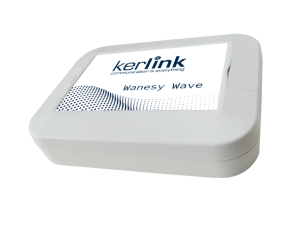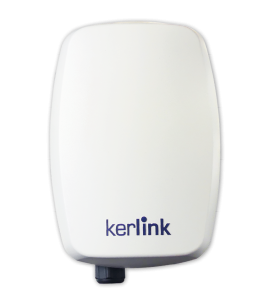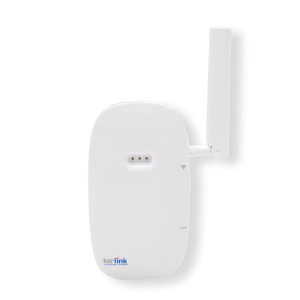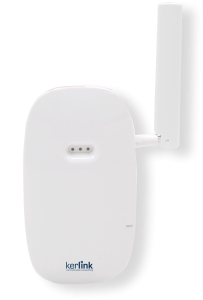Industry & Manufacturing
Field Efficiency and Workers Safety Drive IoT Adoption for Industry
Production Site
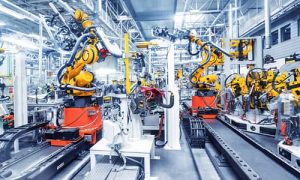
Industrial IoT (IIoT) today covers a broad range of use cases. IIoT illustrate the increasing penetration of connected IoT sensors, devices and heavy equipment in the industry to increase productivity, reduce downtime, reach greater quality control and streamline operational costs. If IIoT is widely considered as the process of connecting complex manufacturing tools and capabilities like robots, automated manufacturing, autonomous vehicles, digital twins or augmented reality wearables to provide real-time insights into the manufacturing process, this also covers a wide range of less “hype” and simpler topics which are, however, equally important in the production chain. Getting a feedback channel for specific equipment, assets and tools can really deliver value.
IoT sensors and devices can thus be used for multiple use cases that do not require low latency or high bandwidth. Some concrete examples: tracking tools and light equipment, metering energy consumption, gauging fluids levels, measuring fluids pressures in pipes and tanks, make inventory of materials in warehouses, monitoring waste levels in bins, locating and tracking pallets / rolls / cases or finished products, counting workers, measuring air quality and managing HVAC, heating and cooling systems… to name just a few. These use cases just require the right connectivity, at the right cost and with the right coverage to support the core production activity which, for its part, will require connection capacities that consume more bandwidth and are more efficient in terms of latency, but which are already served today with wired networks…
As the Industrial IoT is progressing, organizations need to consider their connectivity strategy more carefully, in their environment. Because one size does not fit all, successful IIoT deployments will require the right connectivity for the right use case. Otherwise, costs, integration complexity and security challenges will increase. Complementary solutions including Wi-Fi, cellular and LoRaWAN solutions, combined in hybrid private IoT networks, might considerably help to achieve the targeted purpose. Leveraging Kerlink power-efficient and industrial-grade IoT connectivity can be part of a clever access strategy to deliver a robust multi-purpose connectivity for specific use cases, thus considerably reducing Capex and Opex with cost-efficient IoT connectivity solutions and ensuring the best fit for both industrial tasks.
Extraction Site
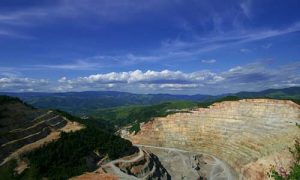
Oil & gas and mining are asset-intensive industries in which equipment and teams have to work under extreme conditions. These industries are also characterized by having remote and inaccessible facilities and installations that must be monitored 24/7 and. If these industries garner heavy investment, they are yet deeply challenged with their existing systems to connect and transform operations. Siloed integration and in-house complex Supervisory Control And Data Acquisition (SCADA) management tools are no-longer cost-effective and sustainable and they increasingly have to turn to open IoT cloud platform solutions[1]. This transformation also implies to collect more and more data from the field to improve industry-focused analytics. Data are key not only to monitor and make the most of their expensive and critical assets, increase productivity and streamline costs, but also to ensure workers safety and to face increasing pressure about this industry carbon footprint and environmental impact. Getting the right information at the right time is key and communications means are difficult to install and maintain over time. Wireless communication appears as the only choice to viably connect operations, on the surface and underground.
IoT sensors and devices can help oil & gas and mining industries in many ways. First, they can enable the 24/7 monitoring of equipment and pipelines to deliver a real-time flow of information to supervisory control and SCADA systems, whatever their location, like temperature, pressure or flow rate / density. Alerts can be raised in real-time and first diagnostics made remotely, without sending field workers on the spot. More broadly, IoT sensors can collect data during all oil & gas and mining extraction, processing, storage and transportation steps. Real-time analytics helps to detect, analyze and understand possible operational process variability and deviations in drilling, pit controlling or
mine planning and enable supervisors and operators to make the right decisions and take relevant actions. Using IoT sensors and connected equipment, extraction industry can collect critical data from heavy vehicle (use, uptime, load, route, fuel consumption…), automated equipment (functionality optimization, predictive maintenance, spare parts inventory turnover…), tools and infrastructure across multiple processes. Second, IoT can help to manage extraction sites located in remote and off-grid locations. Because this is financially challenging to build permanent power infrastructures, extraction industry is relying on rental autonomous energy solutions and eyes scalable microgrids. IoT sensors can help to monitor energy production, distribution and consumption. This is also the case for water catchment, usage and treatment. Worker safety has been one of the main challenges in extraction industry for a while. Workers are at risk: hazardous level of noise, toxic gas and dust inhalation, risk of collapse, temperature and humidity, proximity of large pieces of equipment in confined spaces… IoT sensors can help to monitor air quality, structures, noise, ventilation, airflow or visibility to alert workers or supervisors on time. Combined with connected wearables, IoT sensors can help top take precautionary steps to avoid potentials threats. Finally, IoT can help extraction industry to improve its environmental footprint. If IoT is mainly looked at to increase the automation of field operations, it can also help to meet environmental requirements. Because it is a carbon-intensive and environment-disturbing industry, extraction activity has adverse effects like erosion, biodiversity loss and pollution of surface water, groundwater and soil. IoT can help to monitor, analyze and detect emissions and discharges into nature, assess treatment efficiency and anticipate hazardous consequences like flood, landslide or forest fire.
Leveraging Kerlink industrial-grade solutions provide low-power consumption, wide-area, deep coverage and cost-efficient IoT connectivity to help extraction industry to foster a greater efficiency, streamline operational costs and increase productivity. Using a robust, reliable and performant IoT private network on an extraction site, powered by LoRaWAN technology and Kerlink IoT solutions, can help to collect clear and consistent data to make decisions faster for increased performance, higher throughput and improved workers security.
[1] https://www.abiresearch.com/press/oil-gas-iot-core-analytics-service-revenues-grow-us712-million-2026/
Construction Site
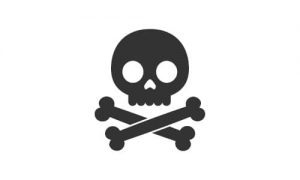
According to McKinsey, cost and schedule overruns are the norm in the construction sector: large construction projects take up to 20% longer to finish than scheduled and are up to 80% over budget[1]. If there is a continuing challenge to fix the basics like lack of coordination between the office and the field, lack of incentives for risks sharing and innovation, inadequate performance management and unsophisticated supply-chain, the industry has not yet embraced new digital technologies making it one of the least digitized industry. And construction sites are also prone to multiple hazards like falls or trench collapse, inconveniences like tools or material theft, and omissions like bad maintenance… There are many opportunities for improvement like efficient use of equipment, dynamic management of material stocks, continuous monitoring of concrete curing and infrastructure strength or site mapping, to name a few. Inclusion of IoT in construction sites can bring many benefits.
IoT Sensors and devices can help construction industry in various ways. They can enable on-site equipment monitoring and repair by measuring equipment servicing, compiling usage data, monitoring preventive maintenance, monitoring fuel consumption and refill, turning-off idle equipment and sending automated alerts. IoT can also help proactive inventory management and ordering: sensors can monitor potential shortage or critical thresholds of materials and automatically place orders to refill stocks. They can, at the same time, monitor storage conditions – like temperature, humidity or heat to alert about potential change that could cause damage – and track materials to pinpoint their location and movement to reconcile physical and electronic inventory or prevent theft. Working air quality in an enclosed space is critical for workplace safety. IoT sensors can be used to manage waste to keep construction process carbon footprint under control. Trash levels and waste disposal bins can be monitored and removed when necessary, avoiding penalties for contractors. IoT can also be key in structural health monitoring to detect vibration, cracks and conditions of critical members of buildings and civil structures, during and after construction, to provide quality assessment. IoT sensors can be embedded in concrete during casting to measure its curing in real-time, helping to improve construction schedules, or can scrutinize vibration and structure health for workers in tunnels and underground spaces. They can also give accurate in-situ estimation of the compressive strength of concrete to optimize critical construction operations such as formwork removal time, opening of a bridge or road or optimization of the concrete mix formula, reducing costs and optimizing timelines. Using IoT enabled tags, tools, equipment and formworks can also be instantly localized and recorded to avoid loss, theft or misplacement. Geolocation can also prevent materials and tools to fraudulently leave the site. Combined with connected wearables, IoT devices can create real-time digital maps of construction sites to highlight workers localization and count the number of employees on site and identify danger zones, hazardous environment or work in progress, thus drastically increasing safety.
Leveraging Kerlink industrial-grade IoT connectivity, powered by LoRaWAN technology, can help to make construction sites more predictable, easier to control and safer for workers. An IoT private network can help to streamline processes, monitor waste production, reduce fuel wastage, monitor equipment usage and health in real-time, increase safety and prevent theft and misuse. Using LoRaWAN-enable robust, ruggedized and performant Kerlink IoT solutions can bring immediate benefits: increase overall safety, reduce downtime, boost the productivity and efficiency and, ultimately, save money and time.
[1] https://www.mckinsey.com/business-functions/operations/our-insights/imagining-constructions-digital-future
Worker Protection
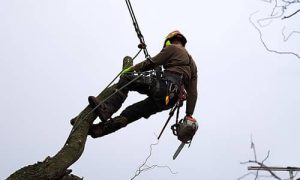
In many industries and services lone workers face the same hazards at work as anyone else, but with a greater risk as they might not have anyone to help or support them on the spot if things are going wrong. And this is especially the case for workers operating in particular high-risk activities or conditions like at heights, in confined spaces (elevators, silos, tanks, underground, tunnels, mines…), with electricity, with hazardous materials or substances, using hazardous equipment like chainsaws, with materials at great pressure or with the public and potential of violence. For lone workers having regular contact, monitoring, location tracking and alerting are sometimes key to ensure the peace of mind to safely and efficiently complete their task. An increasing regulation also drives appropriate response to be deployed by employers to protect their teams and fulfill their duty of care for their staff. The lack of such individual protection solution, lead to repeated incidents and poor safeguards, can boost absenteeism and high staff turnover, decrease productivity, reduce staff morale and increase recruitment costs.
IoT sensors and devices, connected to a robust public or private IoT network, can play a key role to face these challenges. Connected wearables or devices can monitor and track lone workers, indoor and outdoor, and raise appropriate status and alerts in case of specific pre-defined situations like inactivity, non-appearance, being off site (geofencing), and trips or falls. The lone worker can proactively and immediately summon assistance with a panic button that sends an SOS message, with location details and workers identification, to security staff for rapid response. Such Personal Protective Equipment (PPE) can also be used for safety rounds for check-in in specific locations using beacons and tags, connected to the same IoT network.
Leveraging Kerlink industrial-grade IoT connectivity, powered by LoRaWAN technology, can help to deploy such solutions levering deep indoor penetration, wide and full coverage with flexible densification and network-based geolocation for tracking and geofencing. Private IoT networks, using Kerlink robust, reliable and cost efficient best IoT connectivity solutions can help to improve safety, ensure compliance with regulation and duty of care and cut costs related to bad personal protective solution.
Industrial Site Environment Footprint
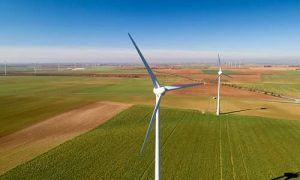
In the context of the fight against global warming, the reduction of the carbon footprint and increasingly stringent regulations for the protection of the environment, the evaluation and monitoring of the environmental footprint of a production, transformation or recycling site is becoming a real imperative. In a report published in 2015[1], Ericsson Research estimated that Global Greenhouse Gas emissions (GHG) could reach 63,5 Gt CO2e by 2030 and that ICT, and IoT mainly, could help to reduce GHG emissions by 12% in 2030 in a high reduction potential scenario (about 8 Gt CO2e)[2]. Smart grid and smart building are the first two sectors identified as likely to generate the largest improvements in the short term. Industries can then look towards IoT as a powerful tool to monitor and reduce their carbon footprint and their impact on the environment. So far, such initiatives for sustainability and climate change remediation faced reduced consideration in industries Corporate Social Responsibility (CSR) activities. But this concern now become mainstream and increasingly forms a significant part of their operations and businesses.
IoT sensors and devices help to monitor how the entire plant fits into its environment, by measuring a wide range of industrial processes and factors: quality of discharged water, toxicity of emitted fumes, pollution of site soil, composition of manufacturing waste, traceability of their treatment and recycling … and raise alerts in case legal or critical levels are reached. IoT sensors and devices can also be used to monitor the energy consumption of manufacturing equipment and premises. For instance, smarter and more responsive energy-efficient lighting can be monitored using IoT to adapt lighting depending on the presence or absence of workers, daytime and daylight. Smart sensors and smart thermostats can also help to manage heating and cooling systems to reduce the carbon footprint and energy consumption, levering pro-active maintenance of air filters, air ducts and other HVAC equipment.
Leveraging Kerlink industrial-grade, robust and versatile IoT connectivity, powered by LoRaWAN technology, can help acquire data with unprecedented clarity and relevance to define a more realistic and efficient appreciation of the flow of events throughout and around the plant. This choice can be part of a clever access strategy to deliver a robust multi-purpose connectivity to execute industries’ initiatives towards reducing their carbon footprint and greenhouse gas emission.
[1] https://www.ericsson.com/en/reports-and-papers/research-papers/exploring-the-effects-of-ict-solutions-on-ghg-emissions-in-2030
[2] https://download.atlantis-press.com/article/25836149.pdf
Kerlink IoT Solutions for Smart Industry & Manufacturing
IOT DEVICE & SENSOR
IOT NETWORK
KERLINK SUCCESS STORIES FOR SMART INDUSTRY & SMART MANUFACTURING

Kerlink & Senzary
Colombian steel plant avoids shutdown and saves thousands of dollars with LoRaWAN-powered, predictive-maintenance and remote machinemanagement system.

Kerlink & Worldsensing
Worldsensing succeeds in Grand Paris Metro Projct with a Kerlink LoRaWAN solution



